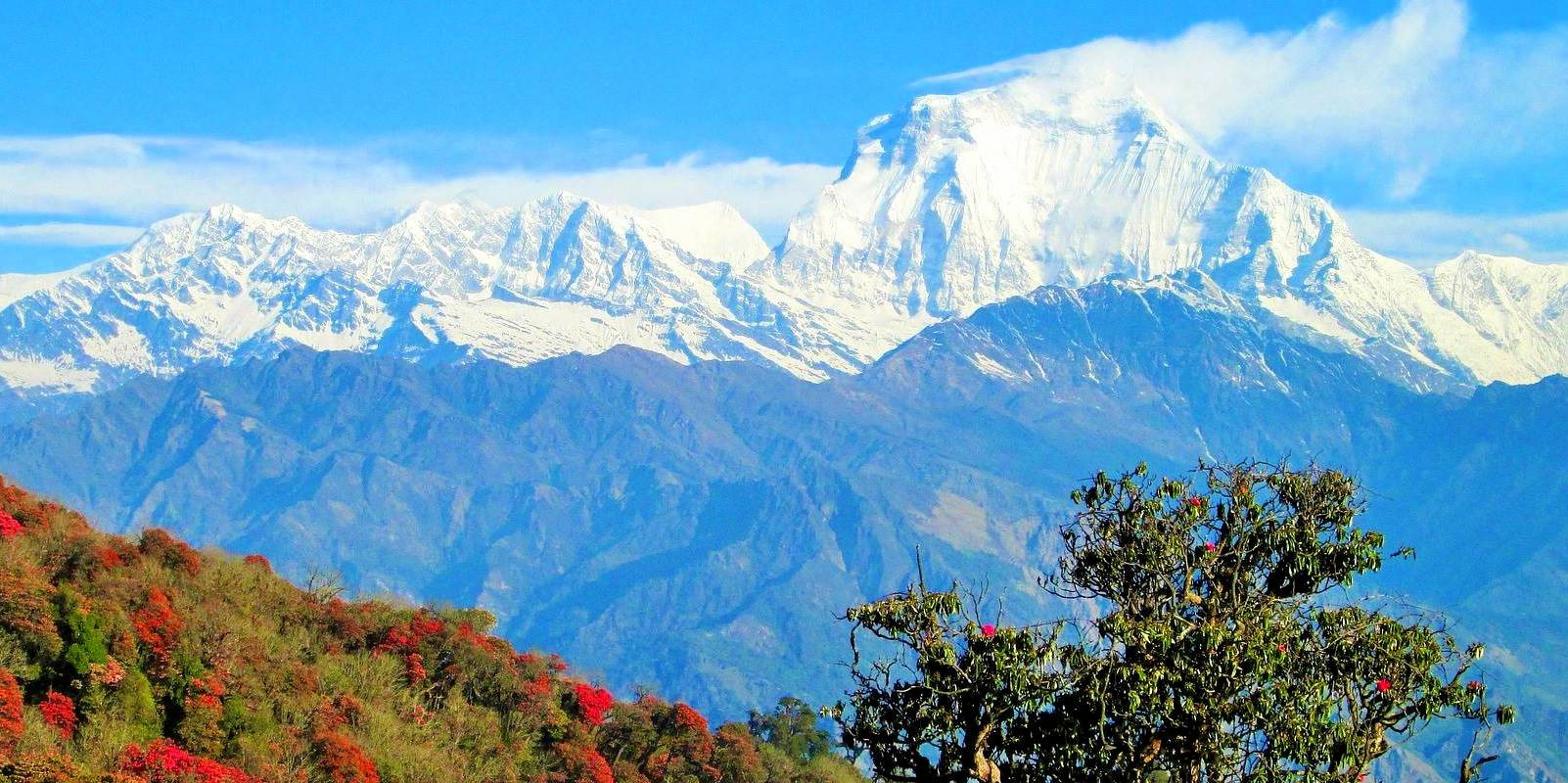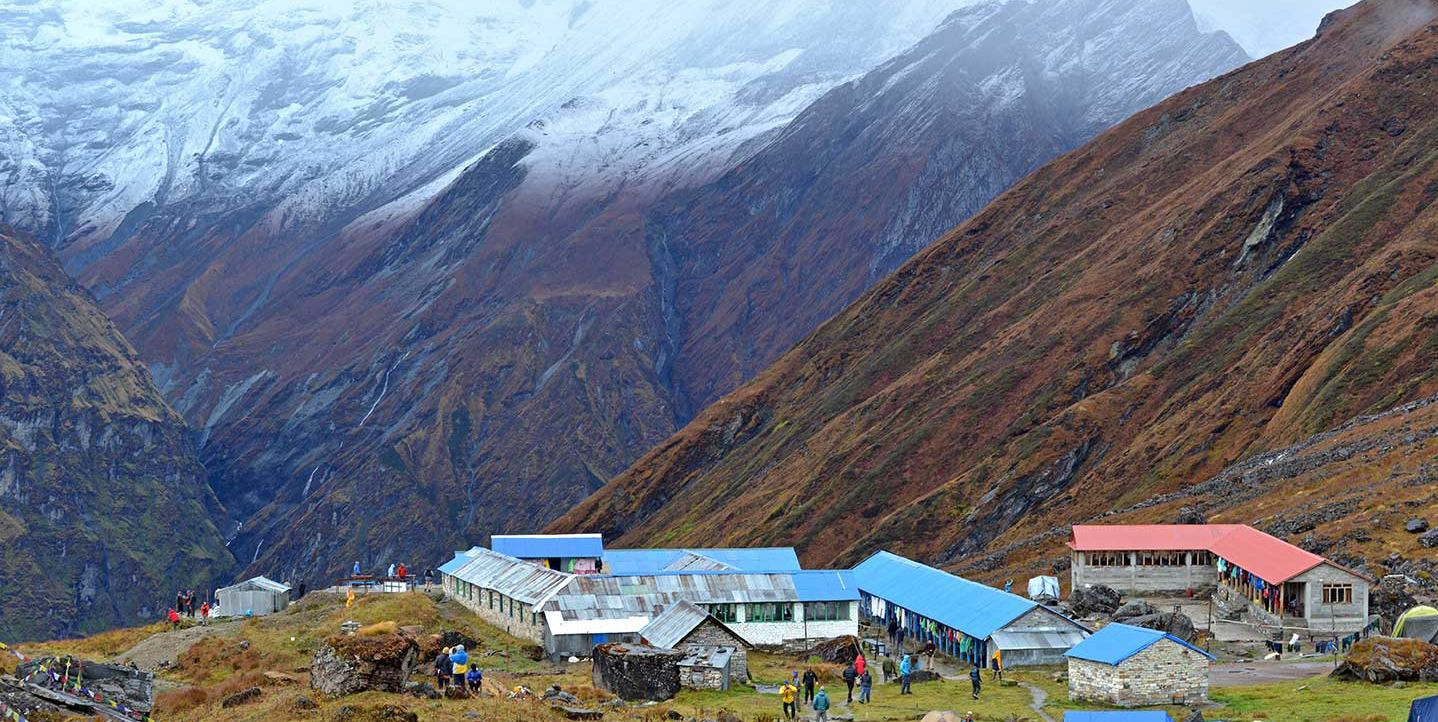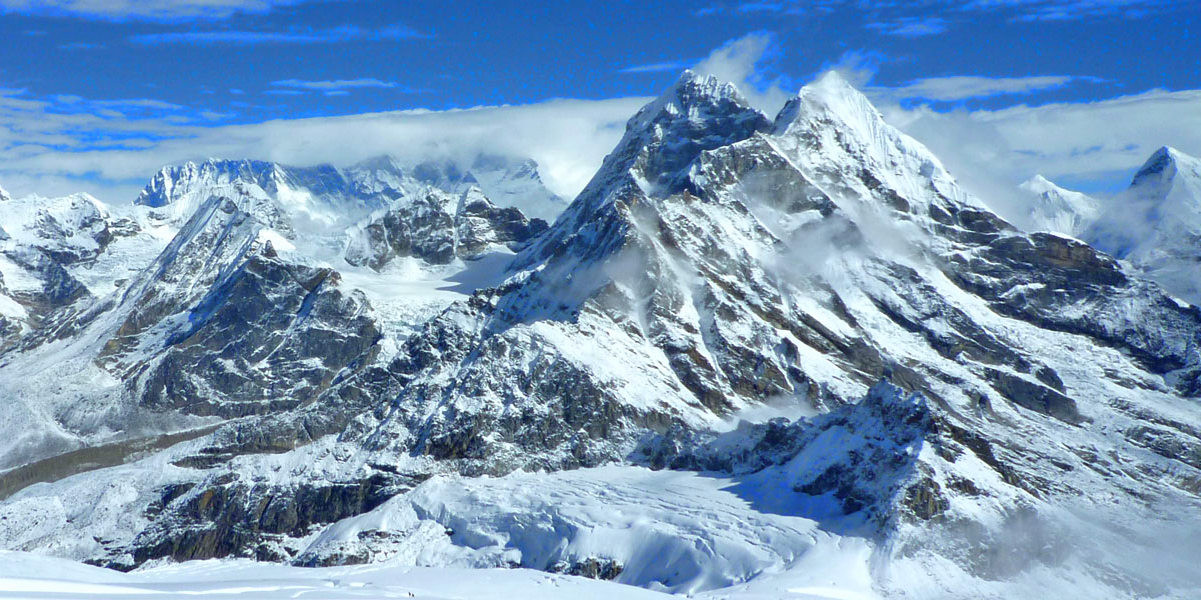Spring (March to May)
Spring in Nepal, spanning from March to May, stands out as the quintessential season for mountaineering enthusiasts aiming to conquer the towering peaks of the Himalayas. This period is widely celebrated for its relatively stable and warm weather conditions, providing climbers with the optimal environment for high-altitude expeditions. Here’s why spring is highly recommended for mountaineering in Nepal:

Ideal Climbing Conditions
-
Warm Weather: As winter recedes, temperatures gradually rise, making daytime climbs more comfortable, especially at higher altitudes where the weather can be significantly cooler.
-
Stable Weather Patterns: Spring is characterised by more predictable weather, with fewer sudden changes, reducing the risks associated with high-altitude climbing.
Enhanced Beauty
-
Floral Bloom: The lower and mid-altitudes of the Himalayas come alive with a vibrant display of rhododendrons and other wildflowers, adding a mesmerising charm to the trekking routes.
-
Clearer Views: The skies are generally clearer, offering stunning panoramic views of the snow-capped mountains, making it a photographer’s paradise.
Peak Climbing Season
-
Popular among Climbers: Many mountaineers choose this season for their expeditions, including attempts to summit Mount Everest and other high peaks. It’s a time when the climbing community comes alive, offering opportunities for camaraderie and exchange.
-
Improved Access: The snow from winter melts away, improving access to higher camps and making the routes less treacherous than in the colder months.
Considerations
-
Preparation is Key: Despite the favourable conditions, proper acclimatisation and preparation are crucial. The variability of mountain weather requires climbers to be well-prepared for any situation.
-
Book in Advance: Given its popularity, securing permits and arranging logistics well in advance is advisable to ensure a smooth expedition.
Spring not only offers the best conditions for climbing but also enriches the experience with its natural beauty and vibrant life. Whether you're a seasoned climber or embarking on your first high-altitude expedition, spring in Nepal provides an unparalleled backdrop for an unforgettable adventure. With careful planning and respect for the mountains, climbers can look forward to a successful and rewarding journey during this prime season.
Autumn (September to November)
Autumn in Nepal, extending from September to November, is another prime season for mountaineering and attracts climbers from all corners of the globe. This period is cherished for its post-monsoon freshness, clear skies, and stable weather, offering excellent conditions for ascending the majestic peaks of the Himalayas. Here's why autumn stands out as a premier time for high-altitude expeditions:
.jpg)
Optimal Weather Conditions
-
Stable and Dry Weather: Following the monsoon, the weather stabilises, bringing less precipitation and clearer skies, which significantly reduces the risks associated with mountain climbing.
-
Cooler Temperatures: The heat of summer gives way to cooler days, making for pleasant climbing conditions, especially at higher altitudes where the air is naturally colder.
Exceptional Visibility
-
Clear Skies: The post-monsoon air is cleaner and less hazy, offering unparalleled visibility. Climbers are treated to crisp, panoramic views of the Himalayan range, enhancing the overall experience.
-
Photographic Opportunities: The excellent visibility and the backdrop of majestic peaks provide perfect conditions for capturing the breathtaking landscapes of Nepal.
Cultural Richness
- Festive Season: Autumn coincides with several significant Nepalese festivals, such as Dashain and Tihar. These festivals offer climbers a unique opportunity to experience and immerse themselves in the rich cultural heritage of Nepal.
Climbing Advantages
-
Reliable Route Conditions: The trails and routes are generally in good condition after the monsoon, with reduced chances of landslides and clearer paths, facilitating easier access to base camps and climbing routes.
-
Popular among Trekkers and Climbers: Like spring, autumn sees a surge in climbing activities, making it a vibrant time for the mountaineering community. It offers a chance to meet and interact with fellow adventurers from around the world.
Considerations
-
Early Winter Weather: By late November, temperatures start to drop significantly, especially at high altitudes, hinting at the approaching winter. Climbers should be prepared for colder nights and the potential for early winter storms.
-
Advance Planning Required: With autumn being a favoured season for mountaineering, it's crucial to book your expedition well in advance. This ensures the availability of guides, permits, and accommodations.
Autumn presents an idyllic setting for mountaineers seeking to explore Nepal's towering peaks. The combination of favourable weather, breathtaking views, and cultural richness makes it a sought-after season for expeditions. Whether aiming for a challenging ascent or a scenic trek, autumn in Nepal offers an adventure that is both rewarding and unforgettable.
Off-Peak Seasons
Mountaineering in Nepal during the off-peak seasons—summer, monsoon, and winter—presents a set of unique challenges and opportunities. While not traditionally favoured due to weather conditions and temperature extremes, these seasons can offer solitude, unique landscapes, and the chance to experience the Himalayas in a different light. Here's a closer look at what off-peak seasons entail for mountaineers in Nepal:

Summer/Monsoon (June to August)
-
Lush Landscapes: The rain turns the landscape incredibly lush and vibrant, offering stunning greenery and blooming flora that are not seen during other times of the year.
-
Solitude: Trails and mountains are less crowded, providing a sense of solitude and a personal connection with nature.
-
Challenges: Trails can be slippery, and the risk of leeches and landslides increases. High-altitude climbing can be more challenging due to the wet conditions and potential for avalanches.
-
Regions Less Affected by Monsoon: Some areas, like the Mustang and Dolpo regions, lie in the rain shadow of the Himalayas and are less affected by the monsoon, offering better conditions for trekking and exploration.
Winter (December to February)
-
Serene Beauty: The snow-covered landscapes offer breathtaking serene beauty, with clear skies and quieter trails.
-
Lower Altitude Treks: While high-altitude climbing might be more difficult, lower-altitude treks can be quite enjoyable, with fewer tourists and clear views.
-
Challenges: Extremely cold temperatures and the possibility of snowstorms increase the risks during expeditions. Days are shorter, limiting the time available for climbing and trekking.
-
Preparation is key. Adequate gear, experience in winter mountaineering, and thorough preparation are essential for anyone considering a climb during this season.
Considerations for Off-Peak Seasons
-
Expert Guidance: It's crucial to have experienced guides who are familiar with the specific challenges and opportunities of mountaineering in these seasons.
-
Flexible Itinerary: Weather conditions can change rapidly, making it important to have a flexible plan and be prepared for adjustments.
-
Specialised Equipment: Proper gear is essential to navigate the terrain and weather conditions safely, from waterproof clothing during the monsoon to insulated gear in winter.
Mountaineering in Nepal's off-peak seasons can offer a unique and rewarding experience for those willing to face the challenges. With the right preparation, guidance, and respect for the mountains, climbers can enjoy the unparalleled beauty and solitude of the Himalayas in a way few others do.
The ideal seasons for mountaineering in Nepal are during the pre-monsoon (spring) and post-monsoon (autumn) periods, celebrated for their stable weather, clear skies, and moderate temperatures, providing optimal conditions for high-altitude adventures. Spring offers warmer weather and blooming landscapes, while autumn is renowned for its clear visibility and cultural festivities. Off-peak seasons like summer, monsoon, and winter present unique challenges but reward adventurers with solitude and distinctive beauty, from lush greenery to serene snowscapes. Regardless of when you choose to embark on your expedition, preparation and guidance from experienced professionals are key to a safe and enriching mountaineering experience. Nepal's diverse seasons each offer its own charm, making it a year-round destination for those seeking to explore its majestic peaks.
FAQs for Best Seasons for Mountaineering in Nepal
Q: What are the best seasons for mountaineering in Nepal?
A: The best seasons for mountaineering in Nepal are the pre-monsoon (spring) from March to May, and the post-monsoon (autumn) from September to November, offering stable weather, clear skies, and moderate temperatures suitable for climbing.
Q: Why is spring considered a good time for mountaineering in Nepal?
A: Spring is favoured for its warm weather, stable conditions, and the scenic beauty of blooming flowers. It's also a peak time for summiting mountains like Everest due to favourable weather conditions.
Q: What makes autumn unique for climbing in Nepal?
A: Autumn provides clear skies and stable weather post-monsoon, with excellent visibility and comfortable temperatures, plus the added experience of Nepal's cultural festivals.
Q: Can I climb in Nepal during the off-peak seasons?
A: Yes, but it presents more challenges. The summer/monsoon season brings heavy rains and visibility issues, while the winter features extreme cold and snow, making climbs more difficult.
Q: What are the challenges of mountaineering in the off-peak seasons?
A: Challenges include heavy rainfall and potential landslides during the monsoon, extreme cold, shorter daylight hours, and snow accumulation in winter, requiring extra caution and preparation.
Q: Is it possible to find less-crowded trails in Nepal?
A: Off-peak seasons offer less crowded trails. Regions like Mustang and Dolpo are ideal for trekking during the monsoon as they are less affected by rain.
Q: How important is it to monitor the weather forecast for a Nepal climb?
A: Monitoring the weather forecast is crucial for safety and informed decision-making, as mountain weather can change rapidly.
Q: Do I need a guide for mountaineering in Nepal?
A: While not mandatory everywhere, hiring an experienced guide is highly recommended for safety, local knowledge, and logistical support, especially for high-altitude climbs.
Q: What should I consider when planning a mountaineering trip in Nepal?
A: Consider the season, specific mountain/region, experience level, necessary permits, equipment, and whether to hire a guide or go with a company. Preparation and research are vital for a successful expedition.
Q: Can I experience Nepalese culture while mountaineering?
A: Definitely! Mountaineering in Nepal also offers rich cultural experiences, especially if you visit during festival times or engage with local communities and traditions.
For the Nepal tour, please click here.
If you are looking for different kinds of Nepal Tours or Trekking Packages, feel free to contact us.



.jpg)
